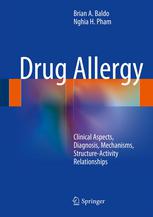

Most ebook files are in PDF format, so you can easily read them using various software such as Foxit Reader or directly on the Google Chrome browser.
Some ebook files are released by publishers in other formats such as .awz, .mobi, .epub, .fb2, etc. You may need to install specific software to read these formats on mobile/PC, such as Calibre.
Please read the tutorial at this link: https://ebookbell.com/faq
We offer FREE conversion to the popular formats you request; however, this may take some time. Therefore, right after payment, please email us, and we will try to provide the service as quickly as possible.
For some exceptional file formats or broken links (if any), please refrain from opening any disputes. Instead, email us first, and we will try to assist within a maximum of 6 hours.
EbookBell Team

4.3
78 reviewsThe variety of chemically diverse pharmacological agents administered to patients is large and continues to expand and with every new drug released, there is always potential for adverse reactions, some of them allergic. With its roots in immunology and pharmacology, the science of drug allergy is becoming better understood and applied as its importance is increasingly recognized throughout the many branches of medicine. Drug Allergy: Clinical Aspects, Diagnosis, Mechanisms, Structure-Activity Relationships sheds new light on this field. Comprehensive in design, this authoritative title identifies the most important culprit drugs implicated in immediate and delayed drug hypersensitivities and offers up-to-date information on classifications, diagnoses, underlying mechanisms and structure-activity relationships. Chapters dealing with the molecular and cellular mechanisms of drug hypersensitivities, non-immune-mediated sensitivities and diagnostic methods are presented as introductory material for in-depth treatises on the β-lactam antibiotics, other antibiotics and antimicrobials, drugs used in anesthesia and surgery, opioid analgesics, corticosteroids, monoclonal antibodies and other biologics, drugs used in chemotherapy, proton pump inhibitors, iodinated and gadolinium-based contrast media and non-steroidal anti-inflammatory drugs. In addition to being of immense value to clinicians, other health care professionals and researchers, this title will prove invaluable for those taking undergraduate and graduate courses in science and will also serve as a useful text for students of medicine, pharmacy, nursing and dentistry.